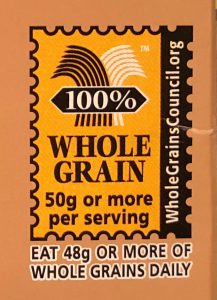Many Americans are more aware of whole grain food consumption as part of a healthy meal plan. In fact, the International Food Information Council’s 2015 survey found that 67% of those surveyed reported reading product labels for whole grains when shopping for packaged foods.
So, what is a whole grain? A whole grain must contain the germ, the bran, and the endosperm in the same state as it was in the field prior to harvest. Generally, most associate fiber with whole grains. In contrast, a refined grain lacks the germ and the bran that contain the fiber, B vitamins, antioxidants, and minerals. Take whole wheat, for example – it contains the trace minerals iron, zinc, copper, and magnesium, antioxidants, folate, and the following B vitamins – niacin, thiamine, and riboflavin.
Why choose whole grains? The fiber content can help to maintain a healthy weight, as it bulks once consumed, and can make one feel fuller, hence consuming fewer calories. Additionally, the fiber can aid with constipation. Other benefits of eating a diet rich in whole grains include decreasing the risk of developing type 2 diabetes, heart disease, and some forms of cancer due to the nutritional content, namely the antioxidant properties.
How much is enough? Children ideally should consume two servings minimum and adults three servings minimum each day. It is ideal for at least half of the grains you consume to be whole grains. Look for the 100% Whole Grain stamp on labels while shopping. It is a now on over 12,000 products, including cereals, breads, chips, flour, pasta, and so much more, in 58 countries.
Understanding what whole grains are and why choosing them can aid with health and well-being is important. Challenge yourself to look for the whole grain stamp and increase your daily intake, for your health.
Resources
https://wholegrainscouncil.org/blog/2015/05/over-23-americans-seeking-more-whole-grains
https://www.webmd.com/food-recipes/features/reap-the-benefits-of-whole-grains#1 https://www.choosemyplate.gov/grains-nutrients-health https://wholegrainscouncil.org/whole-grains-101/how-much-enough https://wholegrainscouncil.org/whole-grain-stamp/its-working
- Summer Beach Fun Includes Beach Safety - June 24, 2024
- Lifestyle and Brain Health - April 19, 2024
- A Picture of Youth Health - July 6, 2023

